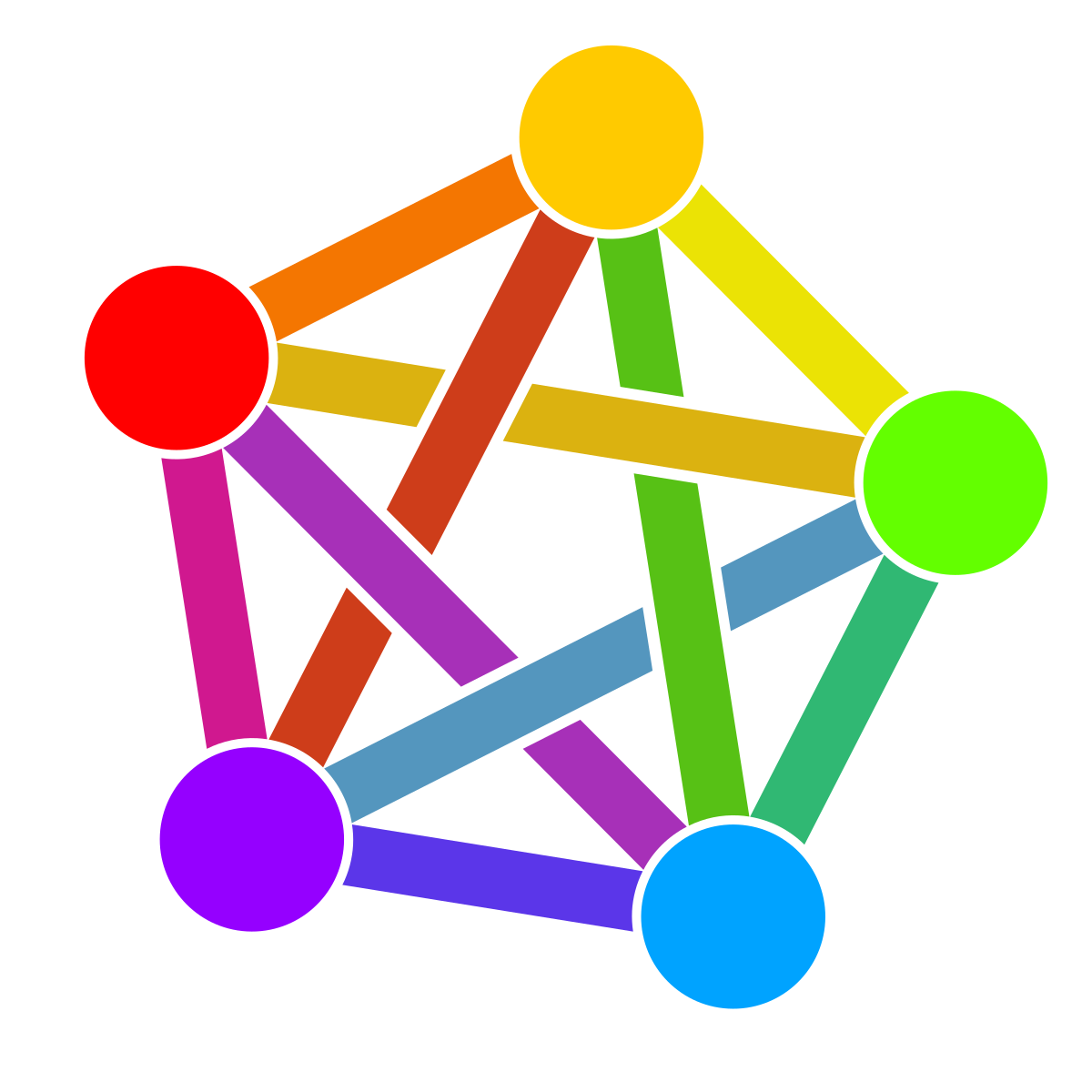

Thanks for sharing.


Thanks for sharing.



I have never used or cared about this W11. It has never seen the internet. I only keep it around for my keyboard’s RGB controller app if I ever need it. So I have no clue if this is everything or whatnot, but that is a screenshot of my access to the windows file system from within the file manager of Fedora. That is a dual boot partition. Fedora is particularly good at coexisting with a dual boot partition.
DNS filtering usually only filters on incoming packets, but for bot stuff that should catch issues.
In general, most routers run everything from a serial flash chip on the board. These are usually 8, 16, or 32 megabytes. They have a simple bootloader like U-Boot. This is what loads the operating system. These devices have a UART serial port on the PCB. You can use a USB to serial UART adaptor to see what is happening in the device. With a proprietary OS, you are still likely to see the pre-init boot sequence that the bootloader prints to terminal. Most operating systems also print information to this interface, at least of the couple dozen junk devices I have been given and messed around with. I make a little mount for a USB to serial adaptor and add it to all of my routers when new, so I only need to plug in USB to get to the internal bootloader and tty terminal interface of OpenWRT. You will need to know the default baud rate of the device, although it is probably listed somewhere online or can be guessed as one of the common high values at or above 9600.
Getting into this further gets complicated. It is probably better to look for any CVE that is relevant to the device or software and work backwards. Look for any software updates that have obfuscated the risk for each CVE. If the issue was not fixed, that is where to look to see if someone has exploited the device. Ultimately, they need clock cycles from the CPU scheduler. So it must be a process or some way of executing code from unregistered memory.
This is getting to the edge of what I have messed around with and understand. There may be a way to get a memory map that includes unused pages, and compare that with a hex dump of the flash memory. This is outside of your scope of a proprietary OS, but hopefully frames the abstract scope of what is possible on this class of device when you have an open source stack. The main advantage of this kind of device and issue is that you can physically remove the flash chip and then see and manipulate every page and memory location. The device likely doesn’t have microcode loaded into the CPU(s) that make it challenging to determine what is going on.
There is probably an easier way, but a hex dump of the current system can be hashed against the factory updated version to see if any differences are present. It is likely that any exploit will include a string with the address to connect to somewhere in flash memory. It could be obfuscated through encryption or a cypher, but a simple check for strings in the hex dump and a grep for “http” is a simple way to looks for issues.
The OpenWRT forum is a good general source. The people behind the bootloaders for these devices are also Linux kernel developers and on the OpenWRT forum.


There is a lot of ambiguous nonsense about this subject by people that lack a fundamental understanding of secure boot. Secure Boot, is not supported by Linux at all. It is part of systems distros build outside of the kernel. These are different for various distros. Fedora does it best IMO, but Ubuntu has an advanced system too. Gentoo has tutorial information about how to setup the system properly yourself.
The US government also has a handy PDF about setting up secure boot properly. This subject is somewhat complicated by the fact the UEFI bootloader graphical interface standard is only a reference implementation, with no guarantee that it is fully implemented, (especially the case in consumer grade hardware). Last I checked, Gentoo has the only tutorial guide about how to use an application called Keytool to boot directly into the UEFI system, bypassing the GUI implemented on your hardware, and where you are able to set your own keys manually.
If you choose to try this, some guides will suggest using a better encryption key than the default. The worst that can happen is that the new keys will get rejected and a default will be refreshed. It may seem like your system does not support custom keys. Be sure to try again with the default for UEFI in your bootloader GUI implementation. If it still does not work, you must use Keytool.
The TPM module is a small physical hardware chip. Inside there is a register that has a secret hardware encryption key hard coded. This secret key is never accessible in software. Instead, this key is used to encrypt new keys, and hash against those keys to verify that whatever software package is untampered with, and to decrypt information outside of the rest of the system using Direct Memory Access (DMA), as in DRAM/system memory. This effectively means some piece of software is able to create secure connections to the outside world using encrypted communications that cannot be read by anything else running on your system.
As a more tangible example, Google Pixel phones are the only ones with a TPM chip. This TPM chip is how and why Graphene OS exists. They leverage the TPM chip to encrypt the device operating system that can be verified, and they create the secure encrypted communication path to manage Over The Air software updates automatically.
There are multiple Keys in your UEFI bootloader on your computer. The main key is by the hardware manufacturer. Anyone with this key is able to change all software from UEFI down in your device. These occasionally get leaked or compromised too, and often the issue is never resolved. It is up to you to monitor and update… - as insane as it sounds.
The next level key below, is the package key for an operating system. It cannot alter UEFI software, but does control anything that boots after. This is typically where the Microsoft key is the default. It means they effectively control what operating system boots. Microsoft has issued what are called shim keys to Ubuntu and Fedora. Last I heard, these keys expired in October 2025 and had to be refreshed or may not have been reissued by M$. This shim was like a pass for these two distros to work under the M$ PKey. In other words, vanilla Ubuntu and Fedora Workstation could just work with Secure Boot enabled.
All issues in this space have nothing to do with where you put the operating systems on your drives. Stating nonsense about dual booting a partition is the stupid ambiguous misinformation that causes all of the problems. It is irrelevant where the operating systems are placed. Your specific bootloader implementation may be optimised to boot faster by jumping into the first one it finds. That is not the correct way for secure boot to work. It is supposed to check for any bootable code and deplete anything without a signed encryption key. People that do not understand this system, are playing a game of Russian Roulette. There one drive may get registered first in UEFI 99% of the time due to physical hardware PCB design and layout. That one time some random power quality issue shows up due to a power transient or whatnot, suddenly their OS boot entry is deleted.
The main key, and package keys are the encryption key owners of your hardware. People can literally use these to log into your machine if they have access to these keys. They can install or remove software from this interface. You have the right to take ownership of your machine by setting these yourself. You can set the main key, then you can use the Microsoft system online to get a new package key to run W10 w/SB or W11. You can sign any distro or other bootable code with your main key. Other than the issue of one of the default keys from the manufacturer or Microsoft getting compromised, I think the only vulnerabilities that secure boot protects against are physical access based attacks in terms of 3rd party issues. The system places a lot of trust in the manufacturer and Microsoft, and they are the owners of the hardware that are able to lock you out of, surveil, or theoretically exploit you with stalkerware. In practice, these connections are still using DNS on your network. If you have not disabled or blocked ECH like cloudflare-ech.com, I believe it is possible for a server to make an ECH connection and then create a side channel connection that would not show up on your network at all. Theoretically, I believe Microsoft could use their PKey on your hardware to connect to your hardware through ECH after your machine connects to any of their infrastructure.
Then the TMP chip becomes insidious and has the potential to create a surveillance state, as it can be used to further encrypt communications. The underlying hardware in all modern computers has another secret operating system too, so it does not need to cross your machine. For Intel, this system is call the Management Engine. In AMD it is the Platform Security Processor. In ARM it is called TrustZone.
Anyways, all of that is why it is why the Linux kernel does not directly support secure boot, the broader machinery, and the abstracted broader implications of why it matters.
I have a dual boot w11 partition on the same drive with secure boot and have had this for the last 2 years without ever having an issue. It is practically required to do this if you want to run CUDA stuff. I recommend owning your own hardware whenever possible.


Any UEFI secure boot enabled distro will remove all boot entries without a valid package key or a shim to a valid key.
Glad you got it working.


K&R?
Graduated pacman emerges… and we all know emerge is Gentoo. This one doesn’t compile.


deleted by creator


So the trick to sanding longer with abrasives is wet sanding. In addition, in automotive work, a drop of Palmolive dish soap is added to a bucket of water. This addition makes a huge difference.
Overall, the principal of like polishes like is important. In abstract, polish is just fine abrasion. Like your finger prints are around 5k-7k grit equivalent. Rub something long enough and you will both polish and abrade it the same as this grit. The oils in your skin are the polishing agent.
I have played around with 10k grit wet sanding and then machine polishing with a light compound where places I rested my hand showed minor variations after stripping any oils and fillers with wax and grease remover (solvent).
I can think of several aspects to increase the complexity here. One could add inserts into the outer vibrating shell. These could be any materials.
I think the bigger issue will actually be the distance between the object and the shell. You see, the size of the random orbital action is the product of two concentric circles. In the pro automotive world, these are pneumatically driven. There are several models available with different properties related to this motion and the internal balance of the mechanism. Within this range of actuation, it is critical that abrasion does not follow a path of repetition. I think this likely means the shell must be larger than the radius of the largest of these two circles or maybe a more complicated size larger than the combination of overlapping radii including their central connection point. This should enable the part to move within the range of random sanding action. That range means the sanding is over a larger area.
The best shell is likely one with gaps similar to a DA sander with ports for dust collection.
Very little of any fiber touches the actual nozzle during printing. The actual fiber size used in filament is far far smaller than what most people imagine. It is only the waste dust from the production and processing of carbon fiber. All actual fibers of any useful length are sold in industry for use in composites. There are continuous fiber printers, but that is not at all related to what is used in 3d printing. If you actually look at the data from people testing materials, fiber infused materials are always weaker. They print better because they are breaking up the polymer bonds. Lots of people jump on the buzzword thinking it is technomagic mor betterer but do not pay attention to the details. If the fiber had any length to it, it would clog like crazy because a long bunch of fibers distributed in 1.75mm crammed into 0.4mm is never going to happen. It is just like a dust additive that happens to be available and is compatible. So it should be well distributed throughout. With ABS a wipe of acetone should help too, if left to completely flash off the solvent for a week or more. That needs to be super limited though. Acetone tends to get retained in bad bad ways with ABS. It is a massive no no to use in automotive applications.


Not in terms of kernel supported encodings and long term kernel support, from what I have seen. I have not looked into this in depth. However, looking at git repo merged pulls, issues raised, and the lack of any consistent hardware commitments or consensus, implies to me that the hardware is very unstable in the long term. When I see any hardware with mostly only base Debian support, it screams that the hardware is on an orphaned kernel and will likely never get to mainline. The same applies to Arch to a lesser degree. Debian has the primary tool chain for bootstrapping and hardware hacking. When it is the primary option supported, I consider the hardware insecure and unsafe to connect to the internet. I’ve seen a few instances where people are talking about the limited forms of encoding support and the incomplete nature of those that do exist. It is far more important to have hardware that will be supported with mainline kernel security updates and is compatible with the majority of encodings. It would be terrible to find out the thing could not support common audio or video codecs. IIRC there was an issue along these lines with the RISC-V PineTab.
I know the primary goto for RISC-V is SiFive, but I have not seen a goto LTS processor from them in terms of third party consistent use.
Plus, while more open is mor betterer, RISC-V is not full proof from a proprietary blob either. The ISA addresses the monopolistic tyranny and extortion of players like Intel, but there is nothing preventing the inclusion of 3rd party proprietary module blocks. The entire point is to create an open market for the sale and inclusion of IP blocks that are compatible with an open standard. Nothing about these blocks is required to be open. I don’t know if such a thing could be set to a negative ring more privileged than the kernel, but I expect this to be the case.


Most people’s routers are already up 24/7.
We should be able to do our own DNS. Who cares if it is on the wider clearweb. You are paying for an IP address with your internet connection. If you are running a server with verified hardware and signed code, all we need is a half dozen nodes mirroring our own DNS. There must be a backup proxy for the few terrible providers that cause issues with IP. The addresses are not static, but they do not change very often. At worse, you hit a manual button to reset or wait 10 minutes before the DNS updates.


Pipe Pipe is better than Newpipe. I use F-droid’s VLC front end for local music because the built in android back end is VLC. For everything else, in browser


Rπ is proprietary. You really need a hard drive for storage. The point is a TPM based encryption with no user configuration or worry about securing the thing. It just works with no excuses.


It is not about the people that already host. It is about enabling many more by giving them an option to buy a path of least resistance. In exchange, it creates a potential revenue source in a completely untapped demographic. The subscription/donations demographic is like a very unique and niche market. The vast majority of people do not exist within that space. Most people do not have the financial stability to engage like this. It is not that they are unable to accumulate adequate funds, it is that their pay fluctuates over time and their baseline constraints are far more stressful than spending from times of surplus and opportunity. Catering only to those with such surplus and gatekeeping the complexity of self hosting is massively limiting adoption.
The rule in managing a chain of retail stores is that, no matter how you select products to stock in stores, it is impossible to only select products that will all sell on one platform. How you manage the overburden always determines your long term success. You must employ other platforms and demographics to prioritize the mobility of cash flow.
Similarly but inverted, this place has a slice of all demographics. Efforts tailored to the various subsets should tap entirely new potential. A fool imagines they can convert the unstable poor*'r* into a reliable stable income source via donations. Someone like myself has means but not a situation that is compatible. If I have some tangible thing to purchase, I can make that happen. I do not have any subscriptions in life for anything at all. Heck, I won’t even shop on any of my devices I use regularly because I only buy what I intend to go looking to purchase with intent. That is not common, but what is common are spontaneous people that need time to align their finances with their desires. That person is likely to dread paying $5 every month compared to $250 in May when they get a couple thousand dollars on a tax return. Expecting the public to float the stability is stupid. That is not how the real world works. Real businesses always float the overhead. I’m talking about how to free the masses to self host everything for the cost of a nice router spent once with no techno leet filter.


deleted by creator


deleted by creator


Because 99.9% of people will never self host. They would much rather just buy a product that is not setup as a scam. The scam part is less important to most people than the lack of effort required.
This isn’t a thing to get into for the money. It would be about the FOSS aspect. Doing something like this would not break even for the time and labor involved. It might be worth doing for positive digital neighbors, but I am not at all interested in doing anything for negative or rude people.
I come from a background of being a buyer for a chain of bike shops where I spent millions of dollars based upon knowledge of how such markets work. The entry level customer is all that really matters. The extra stuff is just to woo them into the store.
In a place like this, if you engage, you’re actually irrelevant. If you want to target growth, get a lurker to engage for the first time. Getting some random lurkers to buy into the hardware to self host because they care about software freedom is far far more effective than the current ecosystem. When servers are not updated, and people shut down because of administration, it says this is not viable for the average person with a life. So make this easy for the individual. It is such an obvious thing to do.
The present system is basically like go compile OpenWRT for your router and people whining about how it is not fucking hard. It is not, but most people just do nor care to try it. They just want to buy a device, plug it in, and be done. Half of these devices are on factory original passwords. This is the real scope of what people are capable of and expect. The mismatch is easily solved by packing the fediverse as a device. The alternates are great for the 0.1%. I am not talking about you all. I am talking about something that could go from 0.1% to 5% of the fediverse is self hosted, and likely much larger. The whole endeavor would be like a coop socialist kind of thing from the ground up.
Not a tankie. I think the west is complacent and failing to adapt to automation and competition in a changing world that is leaving us behind. Our logistics infrastructure and criminal digital payments systems have failed to be competitive.


I would be impressed if the servos are enough to power it. Skimming through a dozen pages of posts it was just the most interesting thing I spotted to try and post some content in a dead feed lull.
You are solely responsible for vetting the software that you choose to run.
I do not review or care about the tools a person uses to create their projects. I appreciate the disclaimer when the person discloses their aptitude and confidence in their code.
Free software and Unix culture is a culture of hackers. Stallman’s very degree is in AI. Emacs is mostly a thing because lisp was adapted early on for AI development many decades ago.
Junk code is nothing new. X11 is notoriously bad, yet you likely have parts of it running on your hardware. Proprietary code is far far worse than anything a hacker posts as open source, yet you are running proprietary blobs on whatever device you are looking at now. Even if you are like myself with a libreboot machine, Leah readily admits that you need to run the core duo microcode if you want it to run right, and are not using that hardware for your primary device. The culture of antiAI is dogmatic nonsense. It is a tool, not a religion. It can be used harmfully or helpfully. I can’t fix stupid in anyone except myself. I do not fault anyone for what they run, the projects they share, or the background they come from. I encourage everyone to be positive and help their fellow hackers. I value participation and enthusiasm. Dogma and negativity are toxic.
I am ultra liberal. You have a right to all information, a right to skepticism, a right to error, and a right to protest in non violent forms aka the right to offend others. You do not have a right to infringe the rights of others.
This anti AI populism infringes the rights to all information and right to error if any administrative actions are taken. Your right to protest and skepticism is duly noted. If these become toxic in any ways that alter the dissemination of information, or toxic/harmful to the individual sharing information, I will remove the offending comments. If the person continues, I will escalate. I am only the janitor here. I clean up the messes. I do not matter, but neither does anyone else here. It is a community, and only the community matters. Garbage software is bog standard. Crusade against things that matter like proprietary software leveraged hardware theft and SaaS.